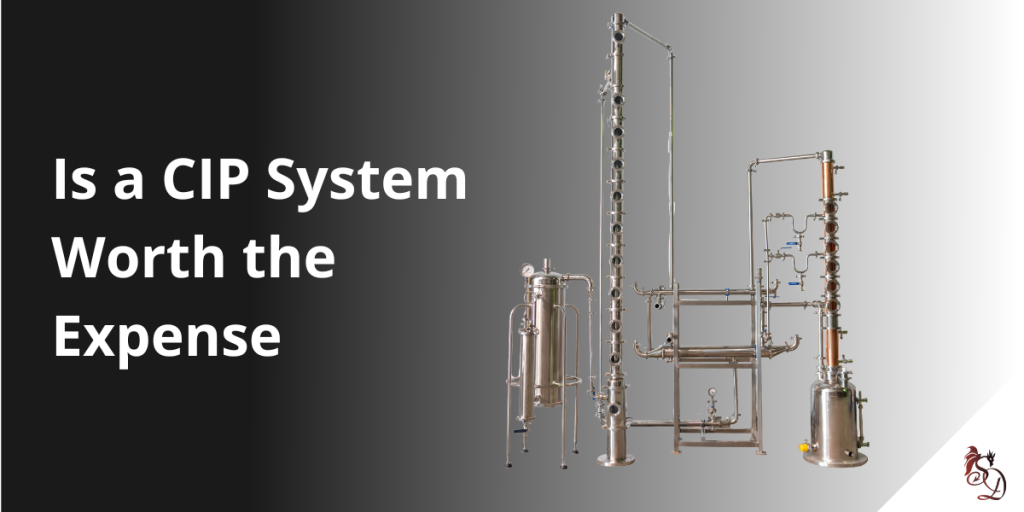Is a CIP Right For You?


What Is A CIP?
A general explanation of what a CIP is/does for your distillery
- The definition of a CIP is – Cleaning In Place. I know what you’re thinking…that’s a pretty broad definition since most cleaning is done in place. So let’s break it down.
- For most nano and microbreweries/distilleries, they don’t own a CIP reservoir (photo shown above), instead, they consider a CIP from the CIP arm from their tanks. The CIP arm is usually located on the right-hand side of the fermenter, and it’s connected to a spray ball that’s inside the tank. The spray ball is a small stainless-steel ball that has small holes throughout it. So, for example: if you connect your hot liquor with enough pressure, the water goes through the arm into the spray ball; the spray ball then spins, pushing the water in an even manner to hit all of the inside of the tank. When it comes to the cleaning part of the tank, it’s very easy to clean that tank in place with the CIP arm, a pump, the absolute out (the bottom valve of the tank), and your chemicals. Hook it all up and let it circulate, and the cleaning in place has begun!
Is a CIP System a Must Have?
Well, it depends on the size of the production of your distillery/brewery and how large your team is. If you are producing around 217,000 Gallons as a distillery, it makes sense, and as a brewery, around 7000 Barrels. That is a large quantity where it’s better to save your water and chemicals as much as possible. So, you would be able to have your caustic/acid that’s heated and next to it your peracetic acid/sani in the reservoirs of your CIP station and cycle those chemicals through all dirty equipment other than dumping it out and using more.
Plus, it helps with the hands-on deck to be able to focus on packaging, fermentation, distilling, and brewing. CIP stations are definitely more of a luxury than a mandatory piece of equipment unless you’re a large production facility with a small team. Contact the team at StillDragon with any possible questions you might have!